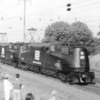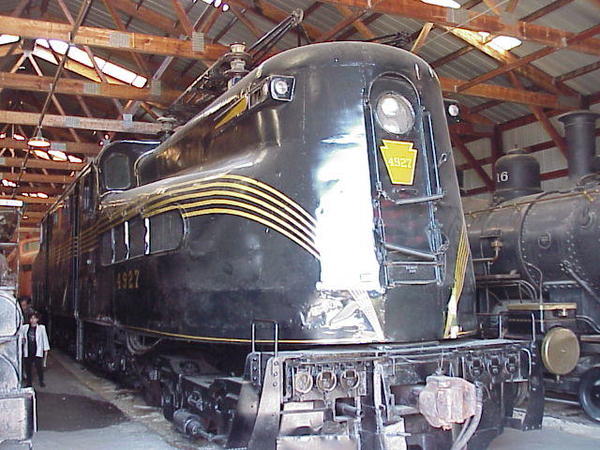Hi, Gregg.
There was a great deal of respect for the GG1s among the employees. The guys I knew regarded it as a privilege to have an opportunity to work with them. Once we reached the mid-70s, the oldest ones had logged 40 years of dependability in high profile service. As I was attending school in western New York state, I served an internship on Conrail's Central Region. The employees knew I was from New Jersey and even they asked me questions about the GG1s since they knew I had grown up around them. The locomotives had clearly earned themselves legendary status, not just among enthusiasts but professional railroaders as well.
That said, it's interesting to examine some of the qualities of the GG1 which you asked about. The cabs were quite primitive and had a very 1930s feel to them which makes sense since that's when they started building the locomotives. The cabs were very cold in the winter and hot in the summer. To combat the summer heat, you'd keep the windows open but then you'd have to contend with the lound sound of the breaking wind as the train moved along at high speed. In the winter, you'd just have to bundle up. I have pictures in which Enginemen are wearing ski caps. Regarding the visibility aspect, as can be seen in pictures taken facing forward along the front of the car body, visibility from the cab certainly wasn't an attribute but having a man on each side worked fine.
Operation of the GG1s was quite interesting. The controller (throttle) had a passenger setting and a freight setting. There were 22 notches for passenger and 17 for freight service. Reviewing employee timetables for PRR, Penn Central, Amtrak, Conrail and NJ Transit, the highest maximum authorized speed I can find for the GG1 at any one time was 100 miles per hour but I, along with most everyone else who was familiar with them, can attest to the fact they were capable of and did run at higher speeds. Based upon his own experiences, one Fireman recounted stories in which a pair of Gs in multiple could maintain 90 MPH with about 70 loaded TOFC flats and 70 MPH with 125 car manifest freights. As has been previously published, a large number of the locomotives were re-geared for 90 MPH. These were the locomotives which were used in freight service but were also still perfectly capable of passenger service. In fact , the thirteen GG1s conveyed to the New Jersey Department of Transportation for North Jersey Coast Line trains between New York City and South Amboy, the 4872-4884, were part of the re-geared group. Interestingly enough, a weakness of the GG1 was starting heavy tonnage. They could be rather slippery when starting heavy freight trains and it required the combined tractive effort of multiple Gs to get heavy trains started and up to track speed but once they got rolling, they rolled. Their acceleration in passenger service was incredible. Coming off the Perth Amboy & Woodbridge Branch with a NY&LB train onto the Northeast Corridor at UNION, once the last car cleared the interlocking, the Engineer would notch out the throttle and the locomotive took off like it was shot out of a cannon. The acceleration was that impressive.
As the 70s progressed, the age of the GG1s really began to show. There had been deferred maintenance during the final years of the Pennsy and throughout Penn Central and despite the best effort of the Wilmington shop workers, reliability began to suffer. Conrail retired its fleet and Amtrak's locomotives soldiered on into the early 80s. Amtrak's GG1s were seen running in multiple more frequently in order to protect schedules. Once Amtrak's fleet was removed from service, the thirteen NJDOT/NJ Transit examples were the last remaining GG1s in regular service. By the time they were retired in October 1983 and replaced by consists of Comet cars powered by ex-Amtrak HEP equipped E60CHs on through trains to New York , their time had come. No premature retirement in this case...these were locomotives which were literally worn out.
Bob

























